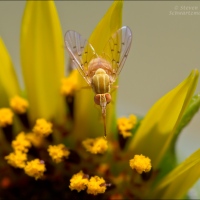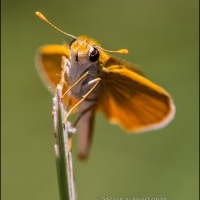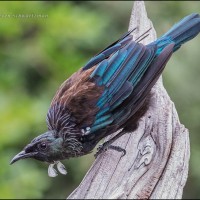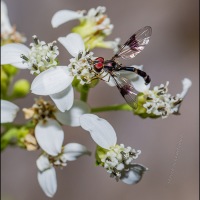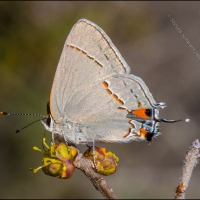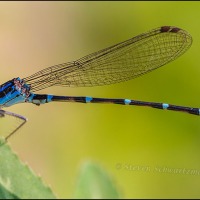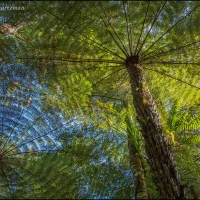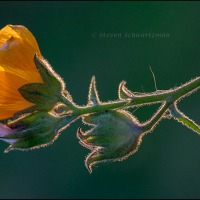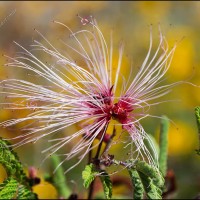Posts Tagged ‘macro photography’
Structures
On August 10th in far north Austin I photographed this seed head of a prairie parsley, Polytaenia nuttallii, with a stray fiber from a nearby Clematis drummondii vine caught on it. On the Blackland Prairie in northeast Austin a week earlier I’d gotten in even closer to reveal the structure on an eryngo, Eryngium leavenworthii.
§
§ § §
§
On August 18th the Wall Street Journal published Faith Bottum’s editorial “California’s Weapons of Math Destruction.” Here’s how it begins:
The California State Board of Education issued on July 12 a new framework for teaching math based on what it calls “updated principles of focus, coherence, and rigor.” The word “updated” is certainly accurate. Not so much “principles,” “focus,” “coherence” or “rigor.” California’s new approach to math is as unfair as it is unserious.
The framework is voluntary, but it will heavily influence school districts and teachers around the Golden State. Developed over the past four years, it runs nearly 1,000 pages. Among the titles of its 14 chapters are “Teaching for Equity and Engagement,” “Structuring School Experiences for Equity and Engagement” and “Supporting Educators in Offering Equitable and Engaging Mathematics Instruction.” The guidelines demand that math teachers be “committed to social justice work” to “equip students with a toolkit and mindset to identify and combat inequities with mathematics”—not with the ability to do math. Far more important is teaching students that “mathematics plays a role in the power structures and privileges that exist within our society.”
California’s education bureaucrats are seeking to reinvent math as a grievance study. “Big ideas are central to the learning of mathematics,” the framework insists, but the only big idea the document promotes is that unequal outcomes in math performance are proof of a racist society.
Plus ça change, et plus c’est la même chose, the French say: the more things change, the more they stay the same. I’ve been listening to educationists push the same claptrap for 50 years. The one thing that has changed is that the fanatics have now pretty much taken over the educational system, and they have the ideological as well as financial support of people who control power in government, the media, and big business.
It makes no difference to the education fanatics, who remain impervious to facts and data, that the implementation of their ideology has consistently led to declining student performance in the United States. Consider the NAEP: “The National Assessment of Educational Progress (NAEP) provides important information about student achievement and learning experiences in various subjects. Also known as The Nation’s Report Card, NAEP has provided meaningful results to improve education policy and practice since 1969.” Here’s one result of the NAEP for this year:
The 2023 mathematics scores for age 13 students at all five selected percentile levels declined compared to 2020. The declines ranged from 6 to 8 points for middle- and higher-performing students to 12 to 14 points for lower-performing students, with larger declines for lower performers in comparison to their higher-performing peers.
In other words, the “oppressed” students that the educationists claim to be helping the most fared the worst. In fact, an NAEP chart shows that for 2023 the age-13 math students in the bottom ten percent did as poorly as that group had in 1978. And it wasn’t just a result of the pandemic, during which many teachers’ unions insisted on shutting down schools for much longer than medically necessary. The same chart shows the performance of the lowest group had already been declining since 2012.
It makes no difference to the fanatics that China, whose leaders unabashedly say they’re working hard to unseat the United States, continues to educate its students in traditional, effective ways, while our kids fall further and further behind. Nothing makes any difference to the zealots who are in thrall to the proselytizing religion of “social justice.”
You can read the full editorial. What it recounts is mostly appalling, but it does report on some pushback from mathematics professors.
© 2023 Steven Schwartzman
August is a good time for mesquite pods
On August 10th in far north Austin I noticed that the pods on a mesquite tree (Prosopis glandulosa) were maturing nicely. They often curve as they dry out, and their surface has a beguiling texture.
(You’re welcome to compare last August’s takes on mesquite pods.)
§
§ § §
§
BIID
Bet you’ve never heard of BIID. Here’s the abstract to the article “Body integrity identity disorder (BIID)—is the amputation of healthy limbs ethically justified?“:
The term body integrity identity disorder (BIID) describes the extremely rare phenomenon of persons who desire the amputation of one or more healthy limbs or who desire a paralysis. Some of these persons mutilate themselves; others ask surgeons for an amputation or for the transection of their spinal cord. Psychologists and physicians explain this phenomenon in quite different ways; but a successful psychotherapeutic or pharmaceutical therapy is not known. Lobbies of persons suffering from BIID explain the desire for amputation in analogy to the desire of transsexuals for surgical sex reassignment. Medical ethicists discuss the controversy about elective amputations of healthy limbs: on the one hand the principle of autonomy is used to deduce the right for body modifications; on the other hand the autonomy of BIID patients is doubted. Neurological results suggest that BIID is a brain disorder producing a disruption of the body image, for which parallels for stroke patients are known. If BIID were a neuropsychological disturbance, which includes missing insight into the illness and a specific lack of autonomy, then amputations would be contraindicated and must be evaluated as bodily injuries of mentally disordered patients. Instead of only curing the symptom, a causal therapy should be developed to integrate the alien limb into the body image.
The comparison to people who want to have operations to change their sex is particularly interesting, don’t you think? If you’re a surgeon and someone asks you to amputate a healthy limb or sever a spinal cord, do you offer “affirming care”? If you don’t, will activists attack you as a BIID-phobe?
© 2023 Steven Schwartzman
Tiny damselfly
On June 24th along and near Bull Creek I noticed plenty of tiny damselflies. This one was about an inch long. After looking at John C. Abbott’s book Damselflies of Texas and comparing with online photographs, I’m thinking this could well have been a male blue-ringed dancer, Argia sedula.
© 2022 Steven Schwartzman
Inaugurating the new year
On New Year’s morning I went to Great Hills Park to try out a new camera: I’ve taken the plunge with a Canon mirrorless camera, the EOS R5. Although that means a reduction in picture size of about 11% compared to my EOS 5DS R, a review I’d read said the better resolving power of the five-year-newer sensor could make up for that loss, and in addition there would be greater dynamic range and less noise at each ISO, particularly the higher ones.
One thing that caught my attention in the park was some shelf fungi on the stump of a black willow tree, as shown above. I worked hand-held and without flash at the high ISO of 2500, which let me stop down to f/14 to keep most details sharp. Yes, some noise appeared in the image, but it was tolerable, and processing let me reduce it even more. The next day I returned with my earlier camera and my ring flash to make some more-abstract, edge-on views of the fungi, like the one below.
Does it look to you, as it sometimes does to me, like the front edge of the fungus in the second picture is protruding forward from the plane of your monitor?
❖
❖ ❖ ❖
❖
Last year I reported on two attempts by the current American administration to illegally give out money to people according to their race. One program involved farmers, and another program involved restaurant owners. Thankfully, judges eventually ruled both programs unconstitutional because they discriminated against people based on their race.
Now New York State is flouting the equal-rights protection that the 14th Amendment to the United States Constitution guarantees to all citizens. On December 27, 2021, the state’s Department of Health announced that it is going to prioritize giving certain Covid-19 medicines to non-white people: “Non-white race or Hispanic/Latino ethnicity should be considered a risk factor, as longstanding systemic health and social inequities have contributed to an increased risk of severe illness and death from COVID-19.” The organization America First Legal has threatened to sue if New York State doesn’t rescind that illegal policy of prioritizing medicines based on the race of an ill patient.
The obvious solution is to prioritize people based on their actual conditions. The aged are at high risk, as are the obese and people with other co-morbidities. Those are the groups who should get priority. If it so happens that more non-whites than whites fall into those categories, fine, but the rationing of medicine will be on medical grounds, not prima facie—and illegally—according to race.
© 2022 Steven Schwartzman
Icing strikes again
When the Austin weather forecast on January 1st said that temperatures would drop into the high 20s by Sunday morning, I knew I’d have to go out and check local frostweed plants (Verbesina virginica) again to see if any performed their ice trick. Some did, though the formations were fewer and mostly a lot smaller than on December 12th. Nevertheless, I found ways to portray what ice there was.
⚙︎
⚙︎ ⚙︎ ⚙︎
⚙︎
A few years ago I read Factfulness: Ten Reasons We’re Wrong About the World—and Why Things Are Better Than You Think. The primary author was the late Hans Rosling, aided by his son Ola Rosling and Ola’s wife Anna Rosling Rönnlund. The book does a great job in bringing forth facts and statistics to document the progress our world has been making, despite many people’s belief to the contrary. I highly recommend Factfulness. You can also find lots of facts at gapminder.org that led Hans Rosling to the conclusion that the world has been getting better.
© 2022 Steven Schwartzman
A red theme
Wanderers through countryside with lots of prickly pears (Opuntia engelmannii var. lindheimeri) know that the cactus often attracts certain bugs. This is one of those, Narnia femorata, on a tuna, or fruit of the prickly pear cactus, in the Zilker Nature Preserve seven years ago today. The bug is a nymph in one of its early instars, which are the developmental stages that the larva of an insect passes through. Click below if you’d like a closer look at the bug as it appeared in a different frame.
Although Texas in the summer of 2011 was suffering one of its worst droughts in decades, when I recently looked back at my archive for August 12th of that year I saw that I went photographing in four locations that day and ended up with hundreds of pictures, like this one along Scenic Drive of ripe snailseed fruit (Cocculus carolinus):
I also found from looking at my archive that I went out taking pictures on 19 of the 31 days in that torrid August of 2011. You could say that I lived up to the motto of the USPS (United States Photographic Service): “Neither heat nor drought nor sun nor sweat stays these intrepid image gatherers from the due documentation of their appointed rounds.”
© 2018 Steven Schwartzman
White prickly poppy center
Here’s a close and downward look at Argemone albiflora, the white prickly poppy. Notice the crowd of yellow stamens invariably paying homage to the red-topped pistil that rises above them in the center of the flower. This photograph is from Great Hills Park on April 23, 2013, five years ago today. I’d planned to show the picture soon afterward but put the post aside and only recently rediscovered it. Better late than never.
© 2018 Steven Schwartzman
Horsetail detail
From the Volo Bog State Natural Area in Lake County, Illinois, on June 7th comes this elongated closeup of a horsetail (Equisetum spp.).
Of the more than two thousand photographs that have appeared here over the past five years, this may be the one with the greatest height-to-width ratio.
© 2016 Steven Schwartzman
Wild onion bud
You’ll probably find more patterning and texture than you’d expect in the bud of a wild onion, Allium canadense var. canadense. Though ancient in design, it could pass for the latest sculpture or architecture.
This photograph is from April 3 along E. University Blvd. in Georgetown. The property was one on which I’d never worked before.
© 2016 Steven Schwartzman
Question Everything.
Okay, here’s something different. After I’d photographed the Mexican hats you saw in the last two posts, I walked a little further down Morado Circle looking for other plants along an undeveloped stretch of land on one side of the road. Before long I noticed that someone had gone to the trouble of painting a portion of a light pole white in order to write a message on it. As you can see, the person got off to a rough begiining beginning. Too bad there wasn’t any way to move the dot of the mistaken i to the end of the sentence to make up for the missing period.
Speaking of missing things, this is supposed to be a nature photography blog, so here’s another picture of a Mexican hat, Ratibida columnifera, from that January 2nd outing. Notice how the tiny disk flowers develop from the bottom toward the top of the “thimble.” In terms of composition, I like the way the arc of amorphous yellow patches in the background echoes the predominant yellow in the subject’s ray flowers. That arc also amplifies the slight curve of the flower head’s stalk.
© 2016 Steven Schwartzman

















